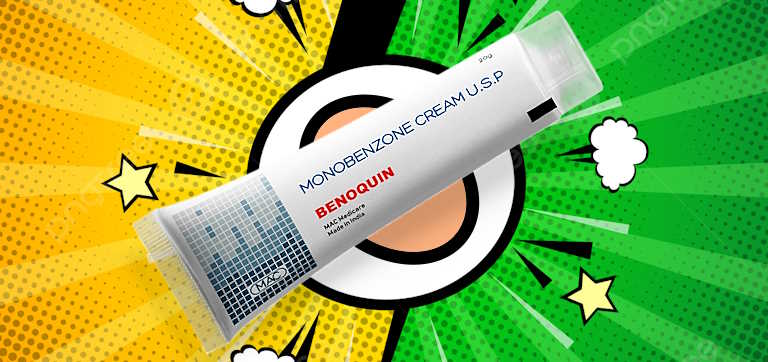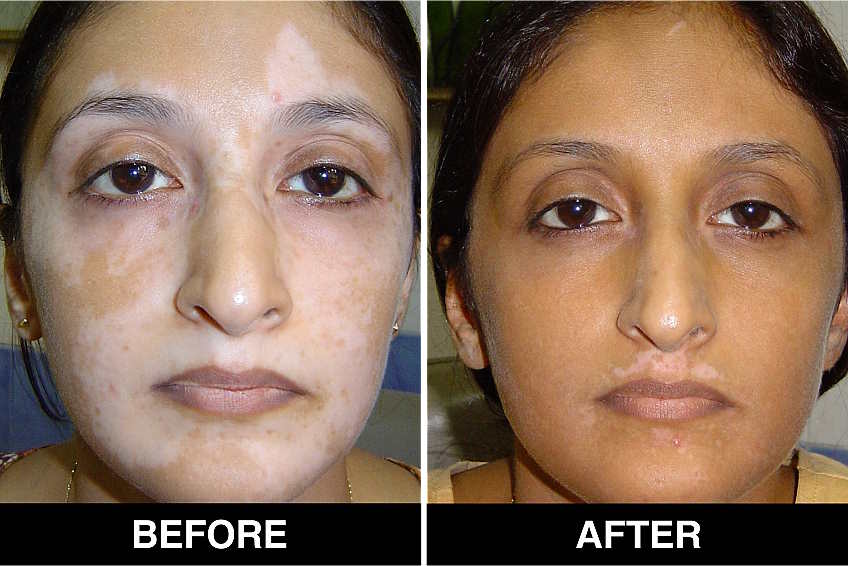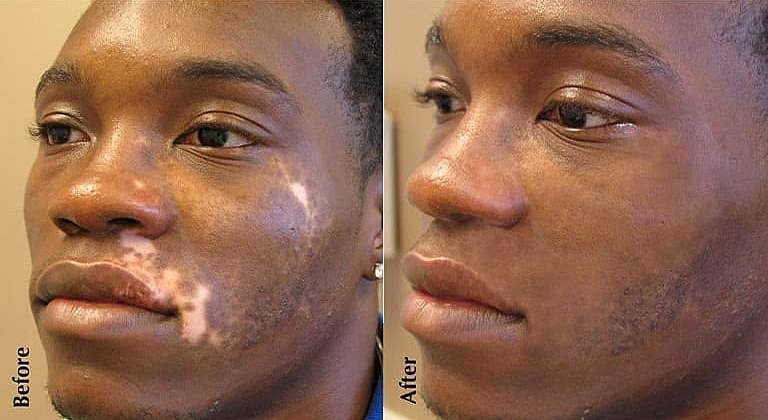Benoquin Cream: A Comprehensive Guide to Vitiligo Treatment
Table of Contents
Benoquin Cream is recognized as a transforming dermatological treatment, especially for vitiligo. This comprehensive guide aims to explain the secrets of Benoquin, explore its uses, understand the transformation through monobenzone before and after, and answer frequently asked questions to provide a thorough understanding of this topical treatment.
Understanding Vitiligo and the Role of Benoquin
Vitiligo Demystified:
Vitiligo is a skin disorder recognized by the loss of melanocytes, leading to the development of white patches on the skin. These patches result from the absence of pigment, melanin, which is responsible for skin color. Vitiligo’s apparent character not only impacts physical appearance but can also have negative effects on one’s mental health. Benoquin Cream is a therapy that is designed to treat these pigment abnormalities.
The Mental Impact of Vitiligo:
Vitiligo has a major mental impact besides the physical symptoms. Individuals grappling Those who are suffering from this health condition frequently have trouble with self-esteem and confidence issues. Benoquin is a highly successful treatment that is becoming increasingly important not just for restoring skin colour but also for enhancing mental health.
What is Benoquin Cream Used For?
Benoquin as a Vitiligo Treatment:
Benoquin Cream is especially effective in treating vitiligo. Monobenzone, which is its active ingredient, works as a depigmenting agent. Benoquin aims to provide a lighter skin tone by decreasing pigmentation in the surrounding areas of vitiligo spots.
Addressing Pigmentation Discrepancies:
Vitiligo can result in clear differences in skin tone, and Benoquin’s work is to remove these differences. However, an exploration of the complexities behind melanin formation and disruption is necessary to comprehend how this treatment functions.
Monobenzone Before and After: The Transformation Process
Monobenzone:
The journey from monobenzone before use to after reveals a fascinating transformation. Before using Benoquin Cream, people often continue visible depigmented patches, impacting their appearance and self-esteem. As monobenzone affects the skin, it causes depigmentation, gradually achieving a more consistent skin tone.
The Permanence of Change:
It is important to recognize that the procedure that Benoquin Cream causes is permanent. When considering its use, people should carefully consider its advantages vs disadvantages of depigmentation.
Psychosocial Impacts:
While Benoquin treats the physical aspects of vitiligo, its impact on people’s psychosocial well-being is equally noteworthy. Additionally, mental well-being and self-confidence can both benefit from improved skin consistency.
-
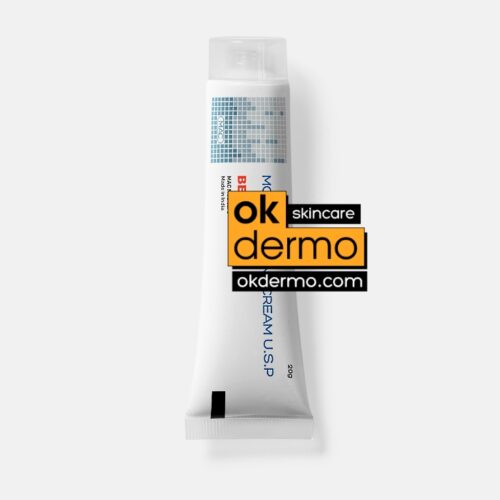
Benoquin® Monobenzone Cream 20%
Monobenzone 20% Depigmenting Agent
Size: 30g / 1.05oz
Brand name: Benoquik, Albaquin, Pigmex
USD $35.00 Add to cart -
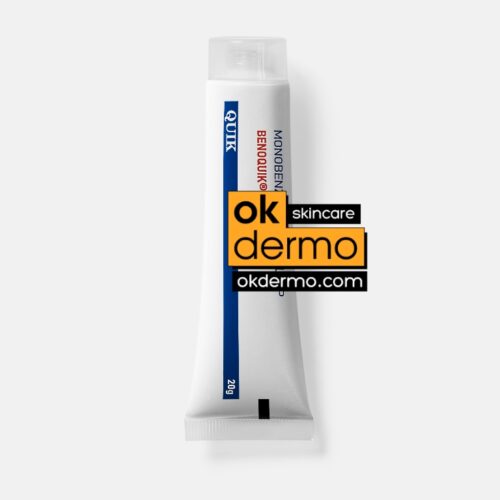
Benoquik® Monobenzone Skin Cream
20% Monobenzone
Size: 20g / 0.7oz
Brand name: Benoquin, Albaquin, Pigmex
USD $36.00 Add to cart -
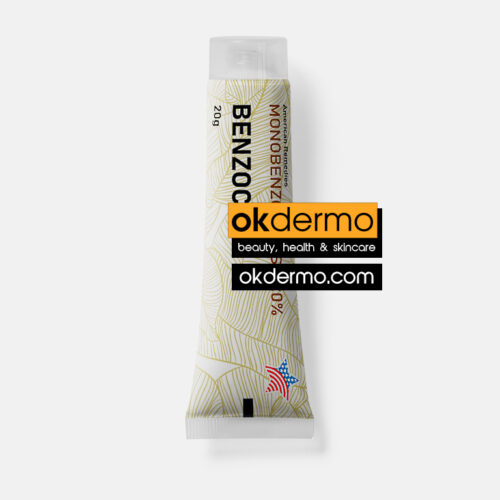
Benzocan® Monobenzone Cream
Monobenzone USP 20%
Size: 20g / 0.7oz
Brand name: Benoquin, Albaquine, Pigmex
USD $25.00 Add to cart -
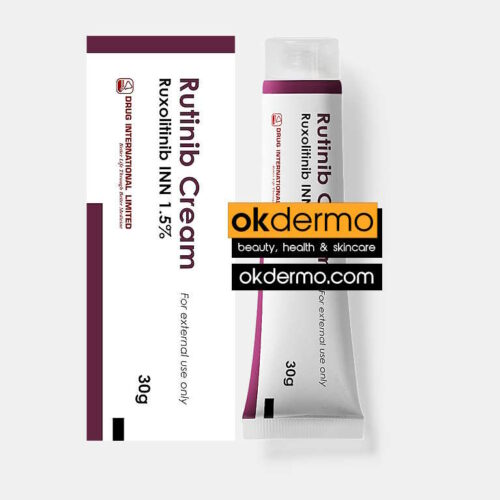
Rutinib® Ruxolitinib Cream
Ruxolitinib 1.5%
Size: 30g / 1.05oz
Brand name: Opzelura
USD $440.00 Add to cart
The Science Behind Benoquin
Melanin Inhibition:
Benoquin’s active ingredient is monobenzone, which operates by inhibiting melanin production. This process involves the disruption of melanocytes, resulting in a controlled depigmentation effect.
Understanding Melanocytes:
Melanocytes are the cells responsible for melanin production. Benoquin’s targeted action on these cells contributes to its efficacy in treating vitiligo.
Emerging Research and Advancements:
We have continued to learn more about vitiligo and the processes underlying Benoquin’s effectiveness through ongoing dermatological research. Patients are certain to obtain the most modern and efficient therapies when these innovations are maintained up to date.
Benoquin Cream 20: Proper Usage and Precautions
Guidelines for uses:
Proper use of Benoquin Cream is essential for optimal results. So, skincare professionals advise following specific instructions to guarantee effectiveness and reduce negative effects.
Individualised Treatment Plans:
Treatment plans must be customized because each person’s vitiligo is unique. Dermatologists are essential in developing plans that take into consideration the particular requirements and concerns of each patient.
Precautions for Long-Term Use:
Long-term use of Benoquin requires careful consideration. Monitoring changes in skin tone and consulting healthcare professionals are integral aspects of its prolonged usage.
Benoquin in Comparison: Evaluating Similar Treatments
Comparative Analysis:
Exploring how Benoquin stacks up against alternative vitiligo treatments provides you with a more comprehensive perspective. Making well-informed selections necessitates taking into consideration factors including efficacy, side effects, and long-term concerns.
Alternative Therapies and Complementary Approaches:
In addition to Benoquin, there are several alternative therapies and supplementary methods available for the treatment of vitiligo. Recognising this environment enables people to consult with their healthcare providers and make informed decisions.
Frequently Asked Questions (FAQs)
What is Benoquin Used For?
Benoquin is primarily employed for treating vitiligo. Monobenzone, its active component, plays a pivotal role in depigmenting the skin surrounding vitiligo patches.
Is Benoquin a Bleach?
While Benoquin induces depigmentation, it differs from traditional bleaching agents. Rather than stripping existing pigment, it inhibits melanin production.
What are the Results of Benoquin Cream?
Benoquin’s outcomes include a more even skin tone, diminishing the contrast between pigmented and depigmented areas. It’s imperative to acknowledge that these effects are permanent.
What Are the Side Effects of Benoquin Cream 20?
The common side effects may encompass redness, itching, and mild irritation at the application site. Following the instructions provided is crucial to reducing the possibility of negative responses.
Conclusion
Benoquin Cream is a unique and powerful solution for those who are suffering from vitiligo. This comprehensive guide has covered through its uses, the monobenzone transformation process, frequently asked questions, the science behind its mechanism of action, and considerations for long-term use. Now you can make decisions wisely when it comes to your skincare journey if you have this knowledge.
As always, consulting with a healthcare professional remains essential in ensuring the right path for each of your unique needs and circumstances. The changing environment of dermatological research and vitiligo treatments highlights the importance of staying informed and engaged in one’s healthcare journey.
References:
- Hann, S.K., et al. (2003). Treatment of Vitiligo with a Cream containing 20% 4-Tertiary Butyl Phenol and 0.1% Methylprednisolone.
- Falabella, R. (2009). Repigmentation of stable leukoderma with 4‐TBP plus MEL and sun exposure. International Journal of Dermatology,
- Grimes, P. E., et al. (2004). Topical tacrolimus for repigmentation of vitiligo.Journal of the American Academy of Dermatology,
Post by:
Marcella Jiovanni
Skin Care Professional
“Marcella Jiovanni actively promotes the importance of maintaining healthy skin, she envisions the future of dermatology as moving away from pure medical, pharmacological dermatology and flowing more toward a holistic approach to wellness and skincare.”

